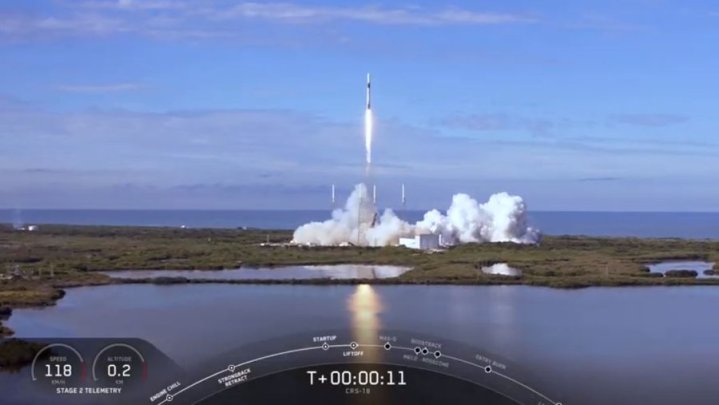
It took a few delays, but SpaceX’s latest resupply launch to the International Space Station (ISS) was seemingly a resounding success, as one of Elon Musk’s Falcon 9 rockets took off from Cape Canaveral Air Force Station in Florida Thursday afternoon. The rocket conveyed SpaceX’s Dragon capsule, decorated with an “Apollo 50th” badge. The capsule contained 5,500 pounds worth of equipment for experiments and ongoing scientific research.
Among other things, this included a 3D printer for printing organ-like tissues on the ISS. It also carried supplies for astronauts aboard the ISS, in addition to a new docking adapter called the Internation Docking Adapter that will help automate the spacecraft docking process on the space station in the future.
Thursday’s launch was the second attempt, coming after SpaceX was forced to cancel its planned launch on Wednesday due to poor weather.
The 3:01 p.m. launch window was an instantaneous one, meaning that the launch needed to happen immediately or it would pushed to another date. Weather improved throughout the day, and SpaceX said earlier in the day that the conditions were 50% favorable. Fortunately (and somewhat miraculously), conditions turned out to be acceptable for launch. The Falcon 9 booster got the Dragon into orbit before making it back down to the Earth and landing exactly where it was supposed to about eight minutes after the launch.
Since it takes around two to three days for a Dragon cargo craft to reach the International Space Station from Cape Canaveral, it seems likely that the cargo will arrive at its destination sometime on Saturday. Given the challenges SpaceX has endured this month, with one of its rockets bursting into flame last Tuesday while testing its engine, this would prove to be some good news on which to end the week.
This is one of the last cargo resupply missions SpaceX launched under its current initial resupply contract with NASA. The contract covered 20 cargo resupply missions to the ISS, of which this was the 18th. The last two under contract will also fly Dragon capsules. SpaceX’s next Falcon 9 launch is due to take place in August. It will convey the Amos 17 communication satellite, intended to provide broadband over Africa, the Middle East, and Europe.


